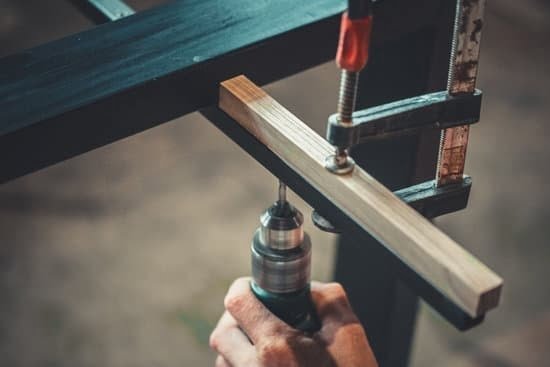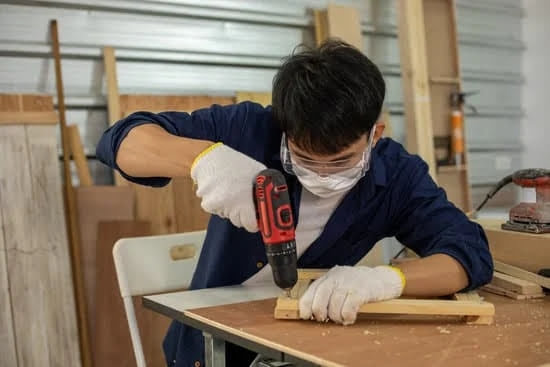Introduction
A woodworking bench base is a tool used to provide a sturdy and stable surface for working on with small and large projects. It is commonly made of high-quality hardwood such as maple, oak, or poplar, depending on the preference of the user. This base is usually rectangular in shape and must be strong enough to support the weight of the materials placed on it while providing adequate workspace space. Additionally, the bench may include storage areas to store tools and other supplies which can then be kept close at hand while working. A woodworking bench base plays an essential role in crafting furniture pieces like tables, chairs, shelves and even toys. When properly fitted with vises, clamps and stop blocks, a project can be held firmly in place so that it can be easily worked on by giving fine attention to detail needed for any given task. Furthermore, its peaked sides serve as guides for planing wooden surfaces straight during projects for accurate joints construction or when crafting intricate carvings.
The Ins and Outs of Bench Base Design
A woodworking bench base is a very important part of any workspace. It provides the perfect platform to work on, and when done right, it can last for years. First, decide whether you want to buy a pre-made base or build your own. If you choose to build, there are several key points that should be considered when designing it. Firstly, the material used in the construction should be strong and durable like hardwood, as it will be supporting heavy equipment. Secondly, the base should have ample stability options depending on the type of work being performed such as adjustable feet for attaching clamps and supports for securing your items. Thirdly, dimensions need to be planned appropriately so that it is capable of accommodating larger pieces of wood or tools without compromising its rigidity or support qualities. In addition to these basic parameters, there are several other design elements that should be taken into account such as fixed perimeter bracing to increase robustness and brackets for easy storage beneath the top surface. Finally, make sure all screws and fixings are securely fastened as any loose fittings can lead to accidents during use! With a properly designed bench base constructed with strong quality materials your workspace will always remain safe and secure.
Benefits of Investing in High-Quality Materials for Your Bench Base
Investing in high-quality materials for your woodworking bench base will provide a strong and sturdy foundation for all of your projects. With the right materials, you can trust that your work space is secure and reliable enough to carry out difficult tasks without compromising quality or safety. The right materials can make all the difference when it comes to having a functional and successful workspace. There are many benefits to investing in higher-grade wood or metal materials when creating your bench base:
1. Strength – High-quality materials will offer greater strength and stability than lesser-grade ones. This will result in a stronger and more secure platform for your tools and equipment, as well as provide protection from damage caused by heavy use. Plus, as the years go by, these topnotch materials won’t easily wear down like their lower-end counterparts.
2. Longevity – Higher quality materials offer exceptional durability that allows them to last through frequent use and constant exposure to elements over generations of time. By investing in high-grade materials, you’ll save money in the long run because they simply last longer before needing any repairs or replacement parts due to wear and tear.
3. Precision ” With premium grade woods or metal components, you’re guaranteed better precision when cutting boards, sawing posts, drilling holes, etc., resulting in smooth edges with straight lines that give off a professional look every time.
4 Safety – Quality components translate into maximum safety in preventing injury due to instability that flimsy wooden structures would otherwise present. A solid metal construction will provide sturdy support for sharp blades and other dangerous tools without the risk of an accident occurring along the way due to inferior construction standards.
Types of Woodworking Bench Bases
Woodworking bench bases come in a variety of different types. The most common types are the U-shaped base, the L-shaped base, and the post and beam base. Each type of woodworking bench base has its own unique qualities that make it suitable for different tasks.
The U-Shaped Base is one of the most popular woodworking bench bases. It consists of two long parallel boards fixed to end supports creating an upside down “U” shape. This design provides plenty of support while still allowing space underneath for storage or additional tools.
The L-Shaped Base is similar to the U-Shaped Base but uses three boards instead of two boards that form a “L” shape which provides even more stability and support than the previous style. This type also allows for more tools to be stored beneath it as well making it great for those who need more organization with their work station.
The Post and Beam Base is a heavier duty version of a workbench base providing maximum stability and support due to its box beam construction on top from three framing posts along each side with cross members in between them connected to one another by screw fasteners making it incredibly strong enough for tough jobs such as carpentry projects or heavy machinery operation. As there aren’t any storage spaces available, this type works better for those in industries requiring heavier duty use with smaller tool sets such as blacksmithing or automotive use rather than general woodworking needs where having storage space beneath it is essential.
Setting Up and Maintaining Your Bench Base
Before beginning any woodworking project, it is essential to ensure that your bench base is properly set up and maintained. Proper setup will provide a strong foundation for the work you do and proper maintenance will minimize wear and tear of the bench.
First, make sure that your bench base is placed on a level surface such as concrete or even plywood. Use clamps to secure the four corners if necessary, then use shims as needed to make sure everything is secure and leveled.
Once the bench base is in place, it is time to customize it for your specific needs. Consider adding pegboardbeneath the benchtop to store tools and supplies, then add drawers or shelves built into either side of the basefor storage. Next, consider adding adjustable visesor dog holes inthe front of your workbench so that you can securely clamp materials during your projects.
Follow this up by installing an appropriate top for your workbench, such as solid wood or even MDFwith multiple coats of polyurethane varnish applied. This will ensure a durablework surface which resists scratches and wear from the various tools and techniques involved with woodenworkingcrafts.
Finally, maintain yourbench’s strength by periodically checking all screwsand nuts associated withthe setupand tightening themasnecessary in order to prevent jointslosening month after monthfrom useand vibrationfrom powertools over time. Regularly feeding woodprotectant oilinto moving parts will also extendthe lifelong useofyour newly builtwoodworkingbench prior to its eventual replacement due towearout down many yearsor decadesin future timesas yougo onwards in life!
Creative Design Ideas for Your Bench Base
When it comes to woodworking, it’s important to have a great foundation. Your bench base is the building block of your project and a crucial component in achieving professional results. With the right design, you can create a durable work surface for years of use. Here are some creative ideas to consider for your bench base:
1. A Torsion Box Base – A torsion box base is an effective solution if you want a lightweight but sturdy workbench frame. This rectangular structure is made of two wooden boards that form an inner rectangle between them with evenly spaced cross braces on the inside edge allowing them to move independently and absorb the force from above without collapsing.
2. An Angled Base – An angled base provides stability at sloped angles that could be beneficial when trying to tackle projects at odd angles on the workbench surface. You can construct this angle by creating a series of cuts with a miter saw or jigsaw at measured intervals along the length of your table top or prototyping fixture’s legs and connecting with matching cross bracing materials.
3. Cross-braced Supports ” For extra rigidity, consider using cross-braced supports as part of your bench base construction. Use pieces of scrap material cut down to size, then add screws and glue to reinforce their position along each corner and then mount them between two opposite boards on each side of your frame adding extra rigidity while still allowing ample flexibility when making adjustments down the road if need be.
4. Adjustable Legs ” If you want the height (and width) of your workbench surface adjustable, consider using adjustable legs in its construction for locking it into place quickly and easily down the road when needed for short or long periods respectively as you progress through various stages within your woodworking project depending on what needs doing at any given time.
The Advantages of Owning a Durable, Quality Bench Base
Owning a high-quality, durable woodworking bench base is a great asset to any woodworker, regardless of their skill level or experience. Such a bench base is essential for a woodworker, as it provides them with a strong foundation to use while they are completing their projects. The functionality and convenience that a good bench base can offer makes it well worth the investment of time and money.
One of the main advantages of owning a quality, durable bench base is its sturdiness. Good quality bases are made from strong materials like metal or hardwood, ensuring that they will hold up over time even in tough working conditions. You also want to make sure your bench base has an adjustable height feature ” this allows you to adjust the height of the bench to meet your needs, depending on the project you are currently working on. This means that regardless of what project you are tackling now or what type of work surface you require later ” your bench base should be up for the job!
Another advantage of owning a solid woodworking bench base is its stability when using it for various projects. When working with larger pieces of wood, if the surface isn’t stable then it may cause problems down the line when trying to finish your project correctly. A good stable bench gives you peace-of-mind that whatever cutting and shaping you might need to do will not be compromised by unreliable movement or wobbling surfaces during use. It also provides excellent levels of comfort due to its sturdy build ” less strain on your wrists and arms which ultimately lead to fewer mistakes made throughout each project!
Finally, yet another great benefit offered by these types of dedicated wooden benches is ease-of-use when setting up shop. With its ergonomic design, often incorporating useful features like storage drawers and trays – these benches can help maximize usable space in your workshop without taking up too much in the way of room square footage… all while providing reliable performance that experienced woodworkers need from such an item!
The Value of Investing in a High-Quality Bench Base
Investing in a high-quality woodworking bench base can be a great way to help ensure that your project runs smoothly. This type of base is designed to provide a secure and handy surface for creating detailed and intricate pieces of furniture, as well as providing an easy to clean work area. By selecting one of these bases, you will be able to work quickly and accurately while spending less time worrying about putting together the project correctly.
A sturdy bench base is also invaluable when it comes to sawing different pieces of wood. Being able to securely fasten the wood ensures that it will not move or budge while in use, making sure that the cuts remain precise and consistent. Additionally, some bench bases have specific slots and recesses, allowing you to hold small parts in place while you work on them making the job even easier.
A quality woodworking bench base will also last you a long time due to its durable construction. It is important that you find one with a solid foundation and superior materials if you want the most out of your investment. Furthermore, thanks to its resilient construction it can handle abuse from normal wear and tear without requiring repairs or replacements any time soon.
Overall, investing in a good quality bench base can prove invaluable when it comes to more complex projects as this type of platform provides better stability for precise operations and allows for efficient waste disposal too. Furthermore, because they tend to last so long rest assured knowing that your purchase will serve you well throughout many projects in the future.
Conclusion
Woodworking bench bases are an essential piece of equipment to have in any workshop. A solid bench base provides the support your workpiece needs while also allowing you to make precise, accurate cuts and angles. Most woodworking benches come with a cast-iron frame for maximum stability and easy accessibility for tools, measuring devices, and other items. Many bench bases also come with add-on components that provide additional functionality such as storage compartments and adjustable legs. All of these features make it easier to perform complex tasks in your workshop without taking up too much space. With the right choice of woodworking bench base, you can create intricate projects that are both fun and functional.

Hi everyone! I’m a woodworker and blogger, and this is my woodworking blog. In my blog, I share tips and tricks for woodworkers of all skill levels, as well as project ideas that you can try yourself.





